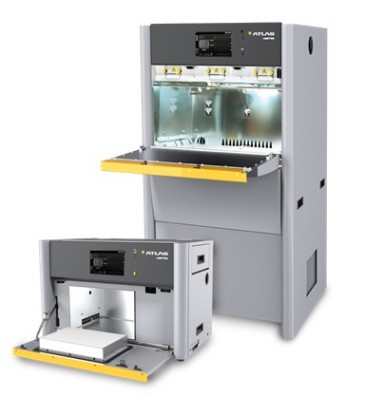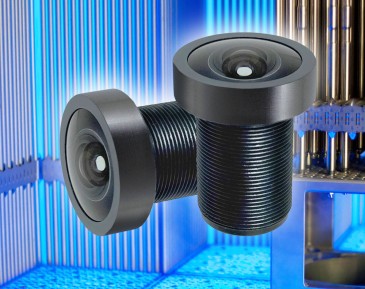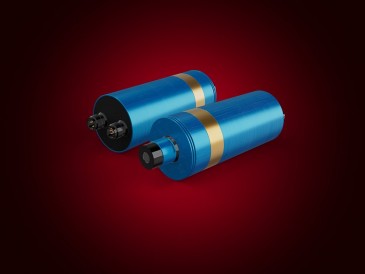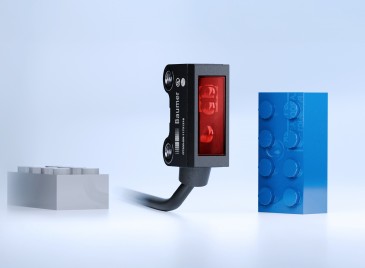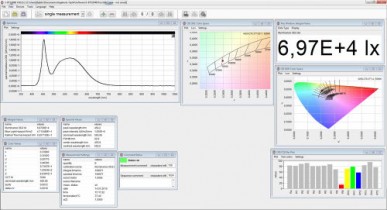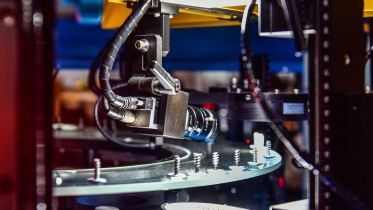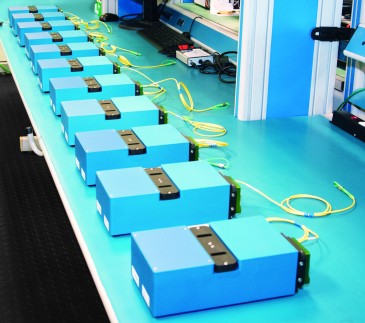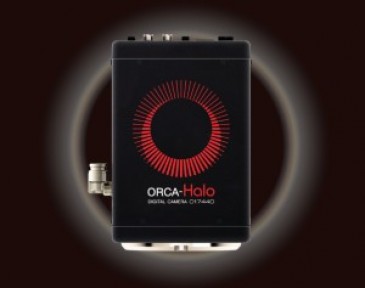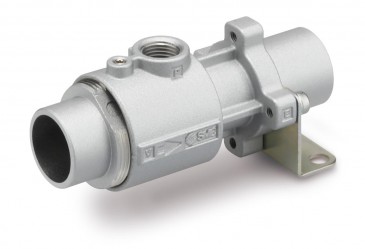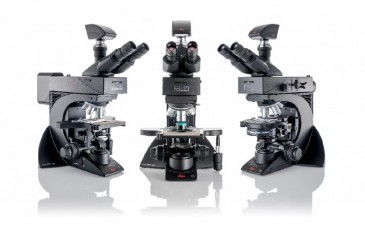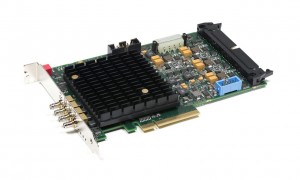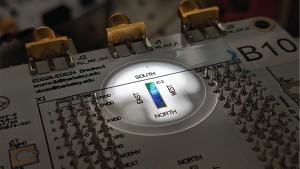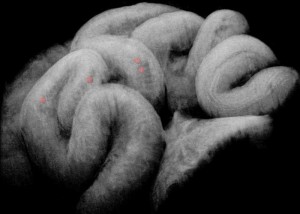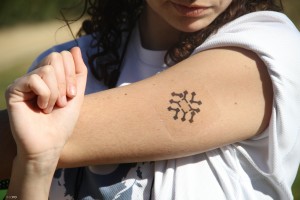
The Graphene Flagship has introduced more than 20 graphene-based prototypes at Mobile World Congress (MWC) 2019. Four of the inventions were developed by Graphene Flagship partner ICFO — the Institute of Photonic Sciences, based in Barcelona, Spain. The technologies could soon turn mobile phones into health-monitoring devices: A patch equipped with a UV sensor monitors the level of exposure to sunlight, and a fitness band measures heart rate, hydration, oxygen saturation, breathing rate and temperature during exercise, for example.
“Both wearables are based on our core light detection technology, enabling different implementations and applications,” says Professor Frank Koppens, group leader at ICFO. The UV-patch records harmful UV-exposure on the skin and returns the UV-index, alerting the end-users the remaining time that one can be exposed to the sun. Users can wear it all day long, since the sensor operates battery-free and only draws power wirelessly from a mobile phone when a measurement is taking place. Adds Koppens: “Another implementation of our core technology is a health tracker, capable of monitoring many vital signs with a considerably improved accuracy compared to current commercial ones.”
A unique graphene-based technology
“Graphene, when combined with materials that efficiently convert light into electrical charge, such as quantum dots, delivers an extremely high performance and is a versatile light detection platform,” Koppens emphasizes. “Even more, its mechanical properties allow the realization of new designs that not only lead to an increased measurement accuracy but also less invasiveness for products.”
Advantages over previous mobile-phone-based monitoring devices
Speaking about his team’s health tracker, for example, the professor points out that the vast majority of products in the market are currently using green light to measure the physiological characteristics of interest, such as heart rate. At the same time, their designs (e.g., a watch) are very sensitive to small movements during a person's daily routine. Both those factors limit the number of vital signs that can be monitored as well as the accuracy of these measurements. “Our technology can use a broad range of light, from visible to infrared, meaning that the light can reach different depths of tissue and thus extract more detailed physiological information,” Koppens says. What is more, the material is flexible and could therefore enable product design with a focus on conformity, which, the expert notes, can help to minimize errors attributed to the movements of the device with respect to the measurement location.
Single-pixel spectrometer and graphene-enabled hyperspectral image sensor
The ICFO team has also developed the world's smallest single-pixel spectrometer and a graphene-enabled hyperspectral image sensor. Koppens explains how every material has an optical fingerprint, mainly due to the type of composing elements, which can be detected using high-cost, complex instruments, such as spectrometers. The need for using multiple types of photodetectors to be able to cover a broad range of these fingerprints makes these instruments expensive and unreachable to all audiences. “However, we have been able to do this with just a single type of photodetector — a broadband photodetector,” Koppens says. “The technology we have developed has allowed us to overcome these limitations, making it possible to be integrated into an everyday device, such as a mobile phone.”
In addition, Koppens and his colleagues have been able to go further and develop an image sensor that can provide not only spatial information but also a chemical footprint. “In other words, one can capture a scene's visible representation or spatial information and, at the same time, reveal the chemical signatures of the objects within that scene with high resolution,” explains the professor, adding that this type of device is called a hyperspectral image sensor, a device enabled by their graphene-based imaging technology.
Applications and path to market
Responding to the question about promises these spectroscopy devices hold, Koppens says: “Imagination is the limit, I would dare to say.” He believes that making these tools widely available through miniaturization and cost reduction enables end-users to approach challenges, being every day or industrial ones, from different perspectives or needs. He names allergens identification in our food or even high-performance sensors for machine vision and quality control as potential promising applications that can be realized with the use of such technologies. The researchers are already working towards the commercialization of their core graphene-based technology through key partnerships. He says they are considering both licensing and spin-out models, depending on the market, resources and risks involved.
Impact on future graphene-based devices
The breakthrough graphene technology could have an impact on the design of the next generation of graphene-based devices, Koppens agrees: “From the advances we have been accomplishing regarding this material, it is clear that graphene, as an advanced material, is a platform technology,” he says. “Taking this into consideration, we have found ways of combining this material and its unique physicochemical properties to design robust systems, scaling it from the component level to the system level, including all the auxiliary components that are created alongside.” In doing this, the researchers have seen that it is necessary to re-design these traditional auxiliary components to really take advantage of the full potential of this new technology. “We expect that the knowledge acquired from our work on these different layers, from the component to system design layer, will create a tool kit that could be beneficial to many graphene-based technology implementations.”
Next steps
Koppens shares that, little by little, his team’s focus is shifting from technology development to commercialization activities. “We have built a team dedicated to carrying out feasibility studies and development that is led by market interactions and needs as well as partnerships and collaborative agreements. We believe that it will not be long before we see these technologies developed into products, so stay tuned.”
Written by Sandra Henderson, research editor, Novus Light Technologies Today























 Back to Features
Back to Features